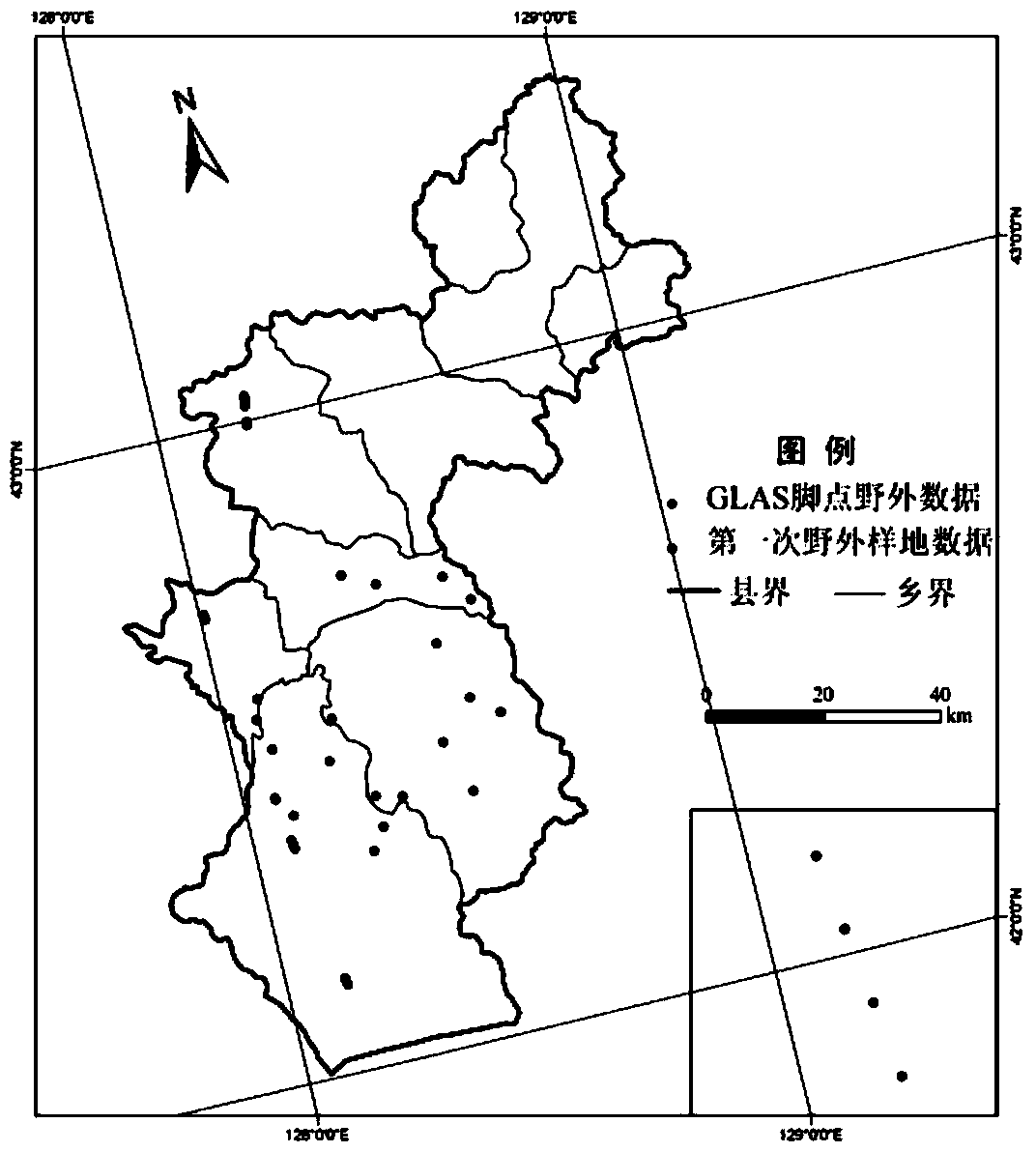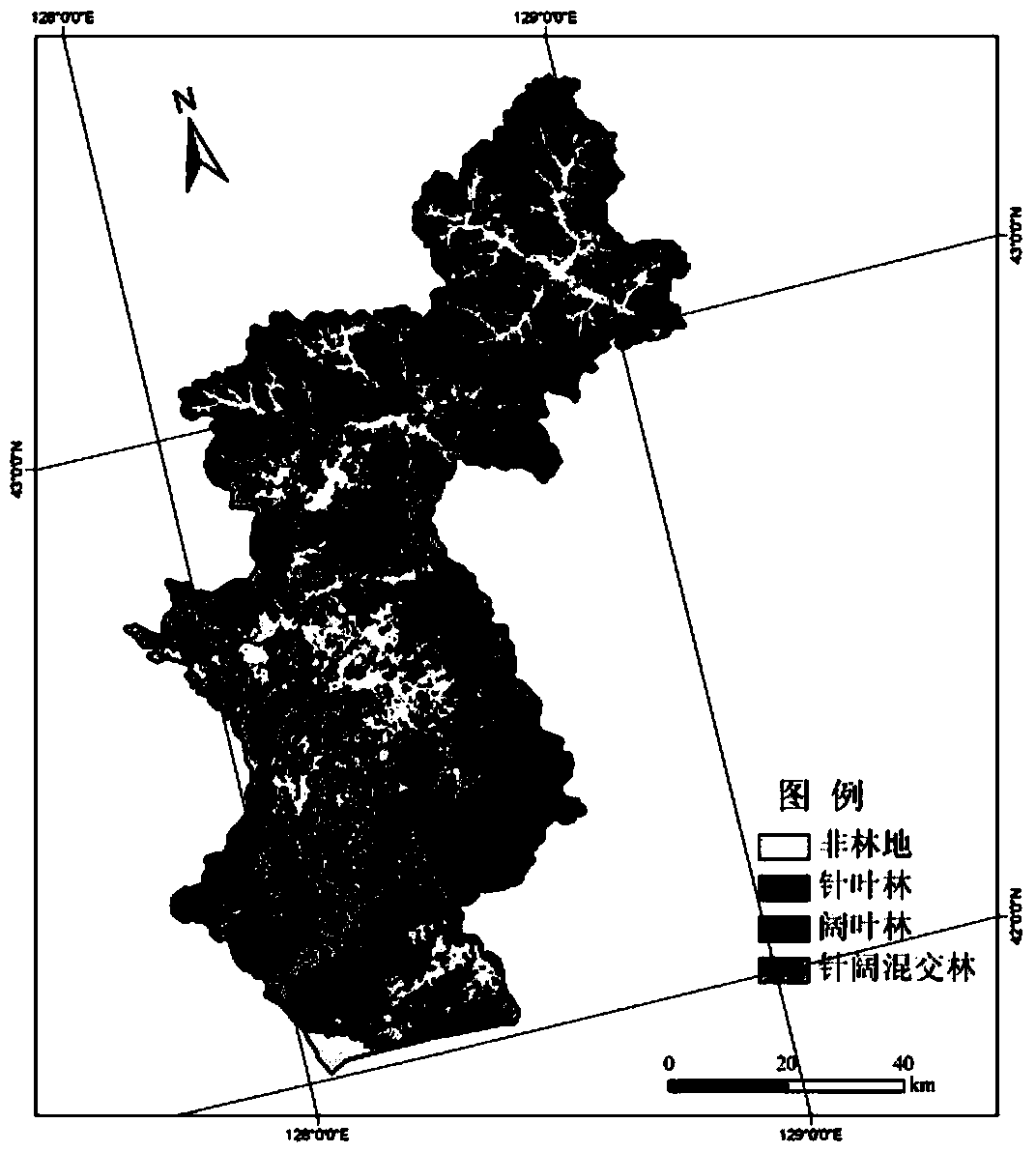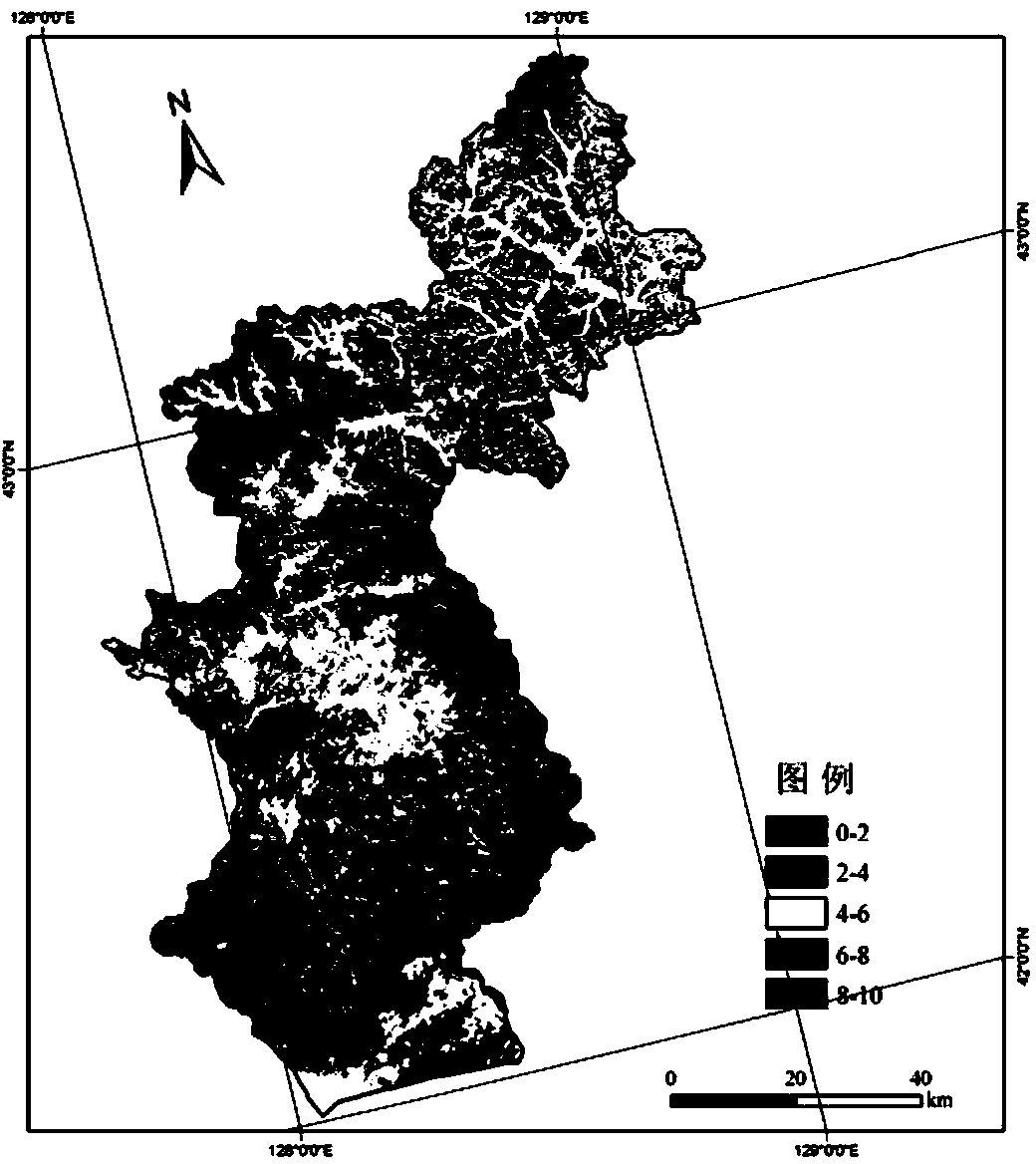Regional scale forest canopy height remote sensing retrieval method
A canopy height and remote sensing inversion technology, applied in the direction of radio wave reflection/re-radiation, electromagnetic wave re-radiation, utilization of re-radiation, etc., can solve the problem of inability to accurately obtain regional-scale forest canopy height information.
- Summary
- Abstract
- Description
- Claims
- Application Information
AI Technical Summary
Problems solved by technology
Method used
Image
Examples
Embodiment Construction
[0036] The Changbai Mountain forest area is an important forest reserve in my country, and it is one of the most complete and best-growing primitive temperate forest ecosystems in the world. Take Antu County, Jilin Province, which is located on the northern slope of Changbai Mountain, as an example for analysis:
[0037] Step 1 Field sample plot setting and survey method
[0038] 1) The distribution of sample plots in the two field surveys is as follows: figure 1 shown.
[0039] Step 2 Acquisition of multispectral TM data and extraction of thematic information
[0040] 2) Forest type information extraction based on object-oriented classification methods, such as figure 2 shown.
[0041] 3) Leaf area index remote sensing estimation. Based on the reflectance of 6 bands of TM remote sensing images and 10 vegetation indices such as RVI, NDVI, SLAVI, EVI, VII, MSR, NDVIc, BI, GVI, WI, etc., and supplemented by topographic information such as DEM, ASPECT, and SLOPE, the correl...
PUM
 Login to View More
Login to View More Abstract
Description
Claims
Application Information
 Login to View More
Login to View More - R&D
- Intellectual Property
- Life Sciences
- Materials
- Tech Scout
- Unparalleled Data Quality
- Higher Quality Content
- 60% Fewer Hallucinations
Browse by: Latest US Patents, China's latest patents, Technical Efficacy Thesaurus, Application Domain, Technology Topic, Popular Technical Reports.
© 2025 PatSnap. All rights reserved.Legal|Privacy policy|Modern Slavery Act Transparency Statement|Sitemap|About US| Contact US: help@patsnap.com



